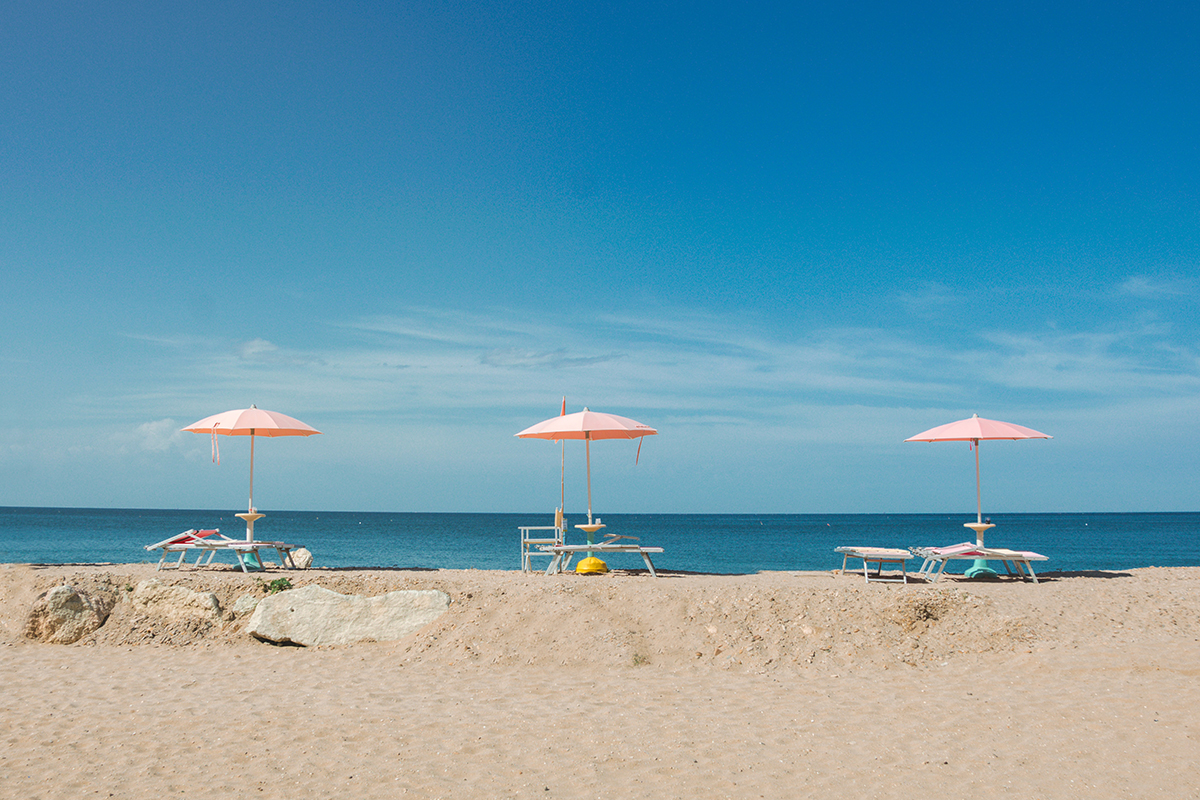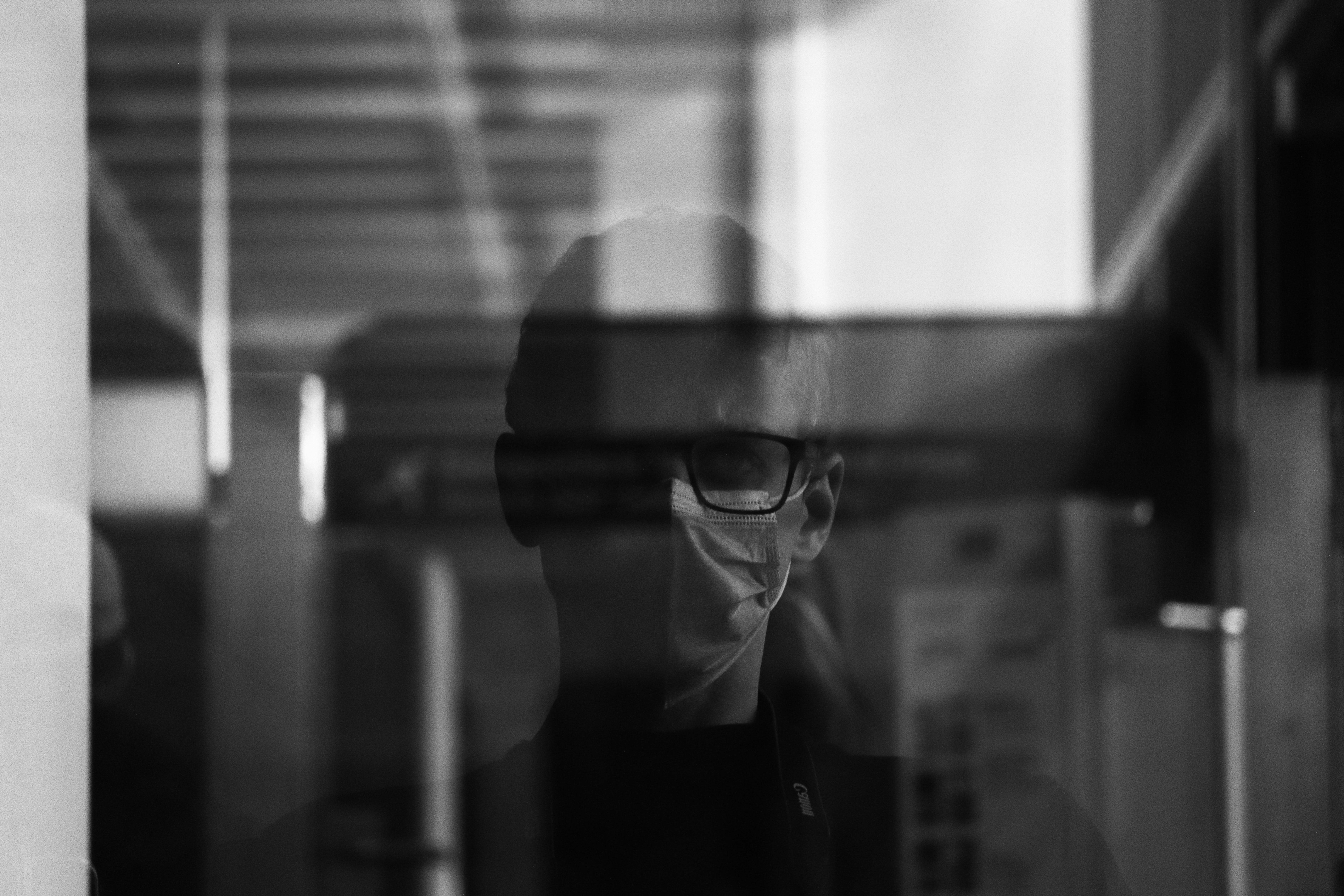The mask-clad captain of a speedboat pulled a hard 180-degree turn and guided his vessel alongside the small, rectangular floating dock where the Trans Maldivian Airways seaplane I had just arrived in was tethered. It had been a short and scenic flight from Malé, the capital of the Maldives, to this small, private landing pad, along the way passing over an endless array of turquoise, ring-shaped atolls. This transfer from seaplane to boat was a Maldivian Uber of sorts, smoother and more rapid than any rideshare I ever snagged, the boat appearing as if conjured by magic the instant the plane had been tied in place.
Once on board, my first orders from the crew were to remove my shoes and socks, placing them in a cloth bag which read “No News, No Shoes,” the motto of Soneva, whose two resorts I’d be staying at in the Maldives. They took the bag with a vague vow to return it to me at some far off time in the future, and it was clear from this point forward that donning footwear would be considered poor form.
If it’s not clear by now, the Maldives is very much open for international tourism, with a string of safety measures in place. If you’re willing to travel roughly a day and a half to get there — and in the case of U.S. travelers following current guidelines and recommendations, taking a total of four COVID PCR tests with several stages of quarantine while awaiting those results — you, too, can visit the country. It’s long been seen as one of the world’s preeminent bucket list destinations, a getaway offering the pinnacle of luxury indulgence and escapism, a mythical place where overwater villas rest above crystal-clear cerulean seas.
But is it possible for this tantalizing scene and its promise of pure and total escapism to ring true during the pandemic?
Traveling to the Maldives Safely
The Maldives currently requires visitors to have a negative COVID PCR test taken a maximum of 96 hours prior to departure from their origin airport, along with taking a subsequent negative PCR test upon arrival. A health declaration form must also be completed, and passengers with positive arrival tests or those who are displaying symptoms are isolated.
At Soneva specifically, the resort whisks you away to a private, comfortable waiting area to administer the PCR test prior to your seaplane ride to one of its two properties, Soneva Fushi or Soneva Jani. Once guests arrive at the resort, they’re kept in quarantine within their accommodations until the results come through, and told to expect the process to take up the first day and night of the trip.

Heading first to Soneva Fushi, my results came back quicker than expected, and in fewer than 12 hours after touching down in Malé I was freed to head out to dinner as opposed to being confined in my villa, where all I had to occupy myself with for my afternoon of waiting was a personal plunge pool and a private swath of white sand beach I could access without encountering others. All the while, a mask-wearing staff member, one of their famous “barefoot butlers,” would be at my disposal should I require any essentials — perhaps a piña colada to stave off the heat of the equatorial sun and the effects of jet lag. With requirements for the U.S. and certain other countries now including a negative test for reentry, Soneva also provides another round of PCR testing the day prior to a guest’s departure.
The air travel itself went smoother than I had anticipated. Flying on Qatar Airways, one of a few airlines operating a robust schedule to and from the Maldives, and with use of its famous Q Suites — a kind of luxe personal isolation chamber — I enjoyed ample space for social distancing and privacy. Tucked away in my pod, door to the aisle closed off, I felt I was in my own world; there was noise out there, yes, and presumably people responsible for it, but none of that was my concern. This was a space to myself.
The flight crew looked like a cross between lab professionals and their typical stylish selves, red belts cinched around a layer of white, disposable PPE, eager to provide top-tier, friendly service in the skies and make the experience as seamless as possible. As far as super long-haul flights amid a pandemic, the Q Suite, which is the airline’s business class offering, turned a dreaded and interminable experience into a veritable pleasure cruise, with PPE amenity kits added to the typical assortment of creature comforts that include a welcome drink of (real) Champagne proffered in (real) glassware, along with pajamas to change into and turndown bed service when it was time to call it a night, sometime after the plane crested the North Pole.
Transiting through Doha, travelers can make use of the in-airport Oryx Airport Hotel. Layovers from the U.S. are often lengthy — mine was eight hours in each direction — and the hotel offers a chance to sleep in a comfortable bed, take a shower and generally get your head straight amid the travel. The hotel offers weary travelers everything from a fitness facility and pool to a squash court and golf swing simulator, along with a chance to — gasp! — even take your mask off for a few hours in your room, a welcome relief. It’s all in addition to the airline’s Al Mourjan Lounge, where a la carte meal service and quiet areas for relaxation await.
The Allure of the Maldives Remains Intact
With the travel days and my quarantine behind me, I began to explore the resort and its lush island. The bulk of its villas are hidden among outcrops of greenery along the island’s edges, and at over a kilometer in length from tip to tip, the island is quite large for a Maldivian resort. Personal bikes or golf carts are the preferred means of transportation as you head from your villa to one of its numerous restaurants or activity hubs. There’s a water-sports center and an over-the-reef bar, along with a cheese cave and chocolate room. Choose your days wisely.
The newest addition at Soneva Fushi, which opened a quarter of a century ago, are the property’s eight water retreats, the largest overwater villas found in the Maldives or anywhere in the world. A one-bedroom overwater villa at Soneva Fushi is more than 6,000 sq. ft. in size, with a personal pool long enough to do laps in, a private waterslide into the ocean, an open-air bathroom area with an enclosed ocean swimming space, shower and bathtub, and even a remote-controlled retractable roof over the bed, ideal for nighttime stargazing. There’s catamaran netting over the ocean for a scenic rest, numerous pieces of glass flooring for a look down at the waters below, and an endless collection of lounging nooks and crannies. The villas are literal and metaphorical playgrounds.
Food at both Soneva properties trends unsurprisingly toward the pescatarian, though other options are available, with Maldivian signature dishes and ingredients crossed with flavors from southern India, Thailand and beyond. The main event is the resort’s lavish breakfast spread, where Sri Lankan egg hoppers might be served alongside dim sum, dosas or noodle soup, perhaps before or after a trip to the cheese cave for some thinly sliced Jamón ibérico. Yet you walk away feeling moderately balanced thanks to vibrant bowls of fresh tropical fruits, assortments of sashimi, morning health shots of juice, and a gigantic collection of teas and herbal infusions. Elsewhere, the resort’s signature restaurants are experiential, with, for instance, Fresh in the Garden, a meal amid the gardens where the resort’s produce and herbs are grown, or Out in the Blue, a multi-level restaurant set above the water emphasizing seafood and sushi.

Soneva Fushi’s sister property, Soneva Jani, is the newer of the two and has a personality all her own. While the two properties boast a similar ethos and signature features ranging from resident astronomers and marine biologists to on-site gardens and recycling centers, they diverge in terms of setting and vibe.
Whereas Soneva Fushi has the feel of a castaway-style resort based on its island, Soneva Jani, opened in 2016, is set in the otherworldly lagoon aquas of the Noonu Atoll. The resort is ensconced in water so clear and violently blue that descriptors fail to do it justice. The overwater villas are connected by a single serpentine boardwalk and come with the same sensational, show-stopping features: the waterslide, the outdoor bathrooms, the retractable roof. A second string of villas at the opposite end of its island opened at the turn of the year, with 27 new entrants doubling the resort’s capacity.
There’s a fanciful, whimsical feel to Soneva Jani, with exterior driftwood tones belying bright, white-washed wood interiors offset by splashes of purple and surrounded on all sides by those astounding azures, the entire resort offers a surreal and ethereal aura. The centerpiece of Soneva Jani is The Gathering, a towering tri-level structure that’s said to perhaps be the largest overwater building found in the Maldives, which is home to its main restaurant, its spa and shops, and yes, its own chocolate room and cheese cave.
The dining options here are diverse, with a beachside Crab Shack restaurant as well as Cinema Paradiso, a Japanese restaurant set before a massive outdoor movie screen, where diners can catch an overwater flick. For fine dining, the best meal I ate at either property came here at Overseas, a newly debuted offering from acclaimed Swedish chef Mathias Dahlgren of the two-Michelin starred Matsalen. His restaurant at Soneva Jani comprises a small pier offshoot from the resort’s central Gathering, with a glass-enclosed cooking shack churning out inventive tasting menus.
To Travel or Not to Travel?
One major caveat for traveling to the Maldives right now is that it does matter where you stay in terms of the relative safety not only for yourself, but more importantly, for the employees of a particular resort. At Soneva’s properties, as mentioned, guests quarantine in their private rooms until their results come through. At other resorts, that’s not necessarily the case. An employee I spoke with at Soneva Fushi, Muhammad, has worked there for 21 of its 25 years, which means he was there for the 2004 tsunami, for instance, and he’s been there now through the coronavirus pandemic. Looking out to the ocean, he tells me, “it’s like the tide, these different times come and go.”
Staff at Soneva are regularly tested, and he’s been happy with how the entire experience has been handled. Yet he shared that he’s heard how other resorts don’t do the same, don’t abide by arrival quarantines, and aren’t as stringent across the board with their testing and other safety and sanitation policies, leading to an uptick in cases among employees and locals. As with many of the workers at the resort, his family lives on a neighboring island close enough to wave at, but far enough in the current climate where months might pass between in-person familial gatherings. It’s not an ideal scenario, but for himself and other employees I spoke with, keeping an informal tally across my stay, each was happy to make the tradeoff in order to hold down their employment.

Writing this now, after my trip — after the PCR test I took before departing back to the U.S., and another I took several days after arriving home before leaving a personal quarantine at my residence — I’m comfortable with the decision I made to travel, and in particular, with the airline I traveled with and the resorts I stayed at. Not once along the way did I feel that this was unsafe for myself, nor that it was unjust or unsafe for the staff I encountered. While understanding that the risk in the current environment cannot be reduced to zero, if anything, the safety procedures I experienced exceeded my expectations.
To answer the original question, then: yes, the paradisiacal promise of the Maldives is indeed there and waiting for you should you choose to seek it out. For me, somewhere along the way between a nightmarish pandemic year and an unending election cycle, with its resulting insurrection and an emotional inauguration, something in my hardwiring short-circuited. I was fried. Productivity and sleep waned, energy levels reached all-time lows, focus was impossible to achieve. My visit to the Maldives enabled me to hit a reset button. Personal equilibrium was restored. As I opened the door back to my apartment, even straight off another 36-hour travel day, I felt recharged and rejuvenated, ready to tackle the world, to handle problems as they arose, to conquer stress and personal demons. It’s a new year, brighter days are ahead, good things still exist. The trick, of course, will be keeping that mindset without the aid of those overwater villas.
For more travel news, tips and inspo, sign up for InsideHook's weekly travel newsletter, The Journey.





















